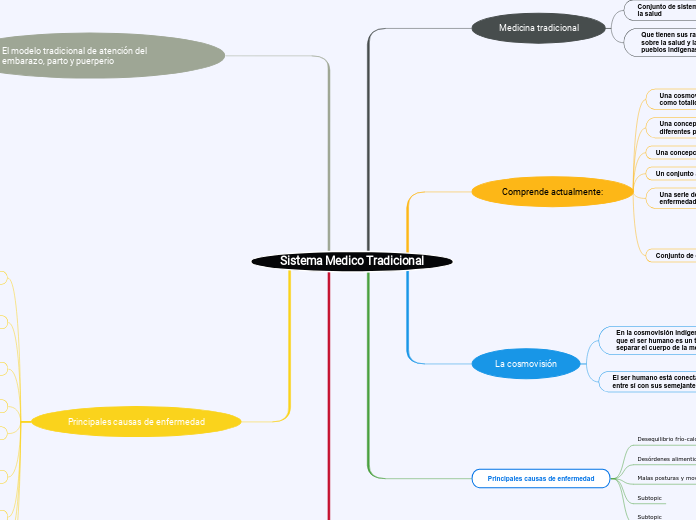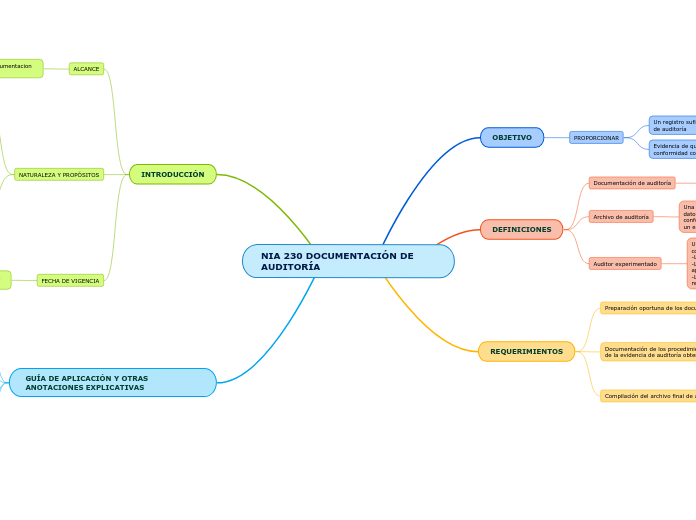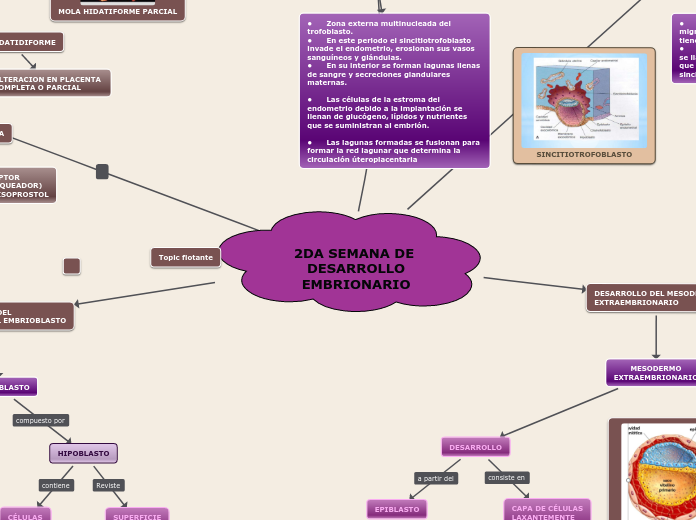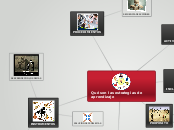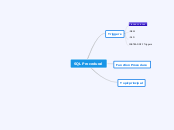Sistema Medico Tradicional
The Solar System is the gravitationally bound system of the Sun and the objects that orbit it, either directly or indirectly. Of the objects that orbit the Sun directly, the largest are the eight planets, with the remainder being smaller objects, the dwarf planets, and small Solar System bodies.
Causalidad y prevención
Mars is a cold, desert-like place covered in dust. This dust is made of iron oxides, giving the planet its iconic red hue.
Mars shares similarities with Earth: It is rocky, has mountains, valleys and canyons, and storm systems ranging from localized tornado-like dust devils to planet-engulfing dust storms.
Las acciones preventivas son determinadas por su forma de entender la causa, la salud y la enfermedad.
Saturn is known most for its rings.
Galileo Galilei first thought it was an object with three parts: a planet and two large moons on either side.
Not knowing he was seeing a planet with rings, the stumped astronomer entered a small drawing — a symbol with one large circle and two smaller ones — in his notebook.
The rings are made of ice and rock and scientists are not yet sure how they formed. The gaseous planet is mostly hydrogen and helium.
• Mal viento o mal aire.
El viento o aire, puede ser un puente entre el mundo físico y el espiritual, entre lo profano y
lo sagrado, entre la causa desequilibradora externa y el desequilibrio interno.
• Alteraciones de la “fuerza vital”
Estados emocionales de desequilibrio.
Debilidad
Originada por la mala alimentación y otras circunstancias que afectan el calor del cuerpo y la fuerza vital.
La debilidad tiene que ver con la fortaleza
de la sangre y la fuerza vital
Suciedad.
La suciedad es un término contrario a “pureza”
Exceso de trabajo.
Saturn has over 150 moons and satellites. However, of these vast numbers of moons, only 62 are known and confirmed as moons.
Name at least 5 of these moons.
Se considera el trabajo como un estado caliente, que puede debilitar
How long does it take for Saturn to go around the sun?
La diarrea y caída de mollera pueden ser debidas a:
• Estar sentado mucho tiempo.
Hacer con el niño movimientos bruscos.
A planet's day is the time it takes the planet to rotate or spin once on its axis.
Write down Saturn's day measured in Earth days.
La diarrea, el latido y las alteraciones intestinales pueden ser producidas por:
Pasar mucha hambre y no comer a su hora.
Comer en exceso
Todos los objetos y seres vivos poseen cualidades que los hacen fríos o calientes con lo que pueden afectar el equilibrio de las personas, produciendo enfermedad.
El modelo tradicional de atención del embarazo, parto y puerperio
It was once considered a planet but in August 2006 the International Astronomical Union (IAU) downgraded the status of Pluto to that of “dwarf planet.”
Pluto is unlike other planets in many respects. It is smaller than Earth's moon; its orbit is highly elliptical.
It's a cold, rocky world with a tenuous atmosphere. Pluto is a very active ice world that's covered in glaciers, mountains of ice water, icy dunes, and possibly even cryovolcanoes that erupt icy lava made of water, methane or ammonia.
Procedimiento en el puerperio
The dwarf planet Pluto has five moons.
Name these moons.
El uso del temascal y los baños de vapor para favorecer la limpieza de la mujer y
su recuperación temprana.
Los masajes postparto conocidos como “apretadas” para favorecer la recuperación de los ligamentos, que a juicio de las parteras previenen la caída de matriz y vejiga.
Procedimiento en el parto
A planet's day is the time it takes the planet to rotate or spin once on its axis.
Write down Pluto's day measured in Earth days.
La participación de su pareja y otros familiares como “sostén” físico y emocional
La identificación del estado de trabajo de parto y la proximidad del periodo expulsivo, sin realización de tactos.
La utilización de posiciones verticales (sentadas, paradas, hincadas y en cuclillas)
que favorecen el trabajo de parto
Procedimiento en el embarazo
How long does it take for Pluto to go around the sun?
Los masajes en espalda, cadera y todo el cuerpo para relajar y preparar a la mujer.
El uso de plantas medicinales para fortalecer el desarrollo del embarazo
Los procedimientos para favorecer el buen acomodamiento del feto (manteadas),
con la mujer acostada boca arriba y a gatas.
Taller “Encuentros de Enriquecimiento Mutuo”
Llegando a negociación intercultural para tomar
acuerdos que favorezcan la salud y satisfacción de las mujeres y de los recién nacidos.
Se lleva a cabo entre el personal de salud de un hospital, o región y las parteras del ámbito de acción.
Principales causas de enfermedad
A planet's day is the time it takes the planet to rotate or spin once on its axis.
Write down Mars's day measured in Earth days.
Subtopic
Malas posturas y movimientos bruscos.
Desórdenes alimenticios.
Desequilibrio frío-calor.
La cosmovisión
Earth is a water world, with two-thirds of the planet covered by oceans.
It's the only world known to harbor life.
Earth's atmosphere is rich in nitrogen and oxygen.
Its name originates from 'Die Erde,' the German word for 'the ground.'
Earth may once have had two moons, nowadays it has just one.
El ser humano está conectado íntimamente
entre sí con sus semejantes y con todo el universo
A planet's day is the time it takes the planet to rotate or spin once on its axis.
Write down the Earth's day in hours.
Plantas
Animales
En la cosmovisión indígena mesoamericana se entiende que el ser humano es un todo en el que no se puede separar el cuerpo de la mente y el espíritu.
Comprende actualmente:
Venus is Earth's twin in size and has no moons.
Its surface has various mountains and volcanoes. Because of its thick, toxic atmosphere that's made of sulfuric acid clouds, Venus is an extreme example of the greenhouse effect. The average temperature on Venus' surface is 900 F (465 C).
Venus spins slowly from east to west, the opposite direction to most of the other planets.
The Greeks believed Venus was two different objects — one in the morning sky and another in the evening. Because it is often brighter than any other object in the sky, Venus has generated many UFO reports.
Conjunto de elementos terapéuticos
Frio en barro y Caliente en temazcal
Masajes
Punciones
Herbolaria
Una serie de estrategias para diagnosticar las enfermedades y los desequilibrios
Un conjunto amplio de procedimientos preventivos
Una concepción de la causalidad
How long does it take for Venus to go around the sun?
Una concepción y clasificación (nosología) de las diferentes patologías,
A planet's day is the time it takes the planet to rotate or spin once on its axis.
Write down Venus's day measured in Earth days.
Una cosmovisión en la que se comprende el universo como totalidad interconectada.
Medicina tradicional
Mercury is the smallest, only a little bit larger than Earth's moon. Mercury has no moon.
It experiences dramatic changes in its day and night temperatures: Day temperatures can reach a scorching 840 F (450 C), which is hot enough to melt lead. Meanwhile, on the night side, temperatures drop to minus 290 F (minus 180 C).
It also has a very thin atmosphere of oxygen, sodium, hydrogen, helium, and potassium and can't break-up incoming meteors, so its surface is pockmarked with craters, just like the moon.
Que tienen sus raíces en los conocimientos profundos sobre la salud y la enfermedad que los diferentes pueblos indígenas y rurales de nuestro país
A planet's day is the time it takes the planet to rotate or spin once on its axis.
Write down Mercury's day measured in Earth days.
Conjunto de sistemas de atención a
la salud
Our Solar System has eight “official” planets which orbit the Sun.
Each planet is at a different distance from the sun. Name its position.
